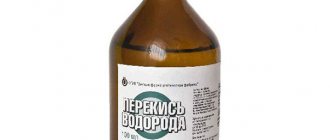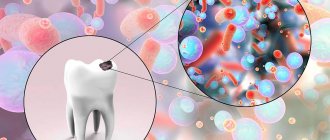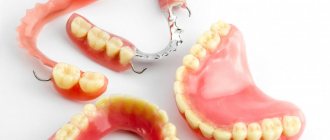Chlorhexidine is a drug that has antimicrobial, antiviral and antiseptic effects. It copes well with thrush pathogens, which is quite important for pregnant women, for whom this problem is very common due to weak immunity. The drug is included in the list of drugs that are allowed to be used when carrying a child.
Composition and release form
Chlorhexidine can be used externally, as a gargle, for douching, or as a vaginal suppository. It interacts well with the skin and mucous membranes without being absorbed into the gastrointestinal tract. The drug destroys fungi, viral infections, gram-positive and negative bacteria (including yeast, dermatophytes and round bacteria), and representatives of the coccal flora.
The main active ingredient of the drug is bigluconate (16 or 20%). The composition of vaginal suppositories additionally includes macrogol. Forms of release of the drug:
- gel;
- solution;
- pills;
- candles;
- ointment;
- spray and aerosol;
- patch.
Chlorhexidine solution: composition, properties of the drug
Chlorhexidine is an excellent gargle.
Chlorhexidine is an antiseptic drug. It has a wide spectrum of action, especially against pathogenic microorganisms of the throat mucosa, including gram-negative and gram-positive bacteria.
This medicine contains 100 milliliters of purified water and the active ingredient – chlorhexidine bigluconate in a volume of 0.05 grams. This composition is typical for 100 milliliters of liquid.
The important properties of Chlorhexidine are:
- Anti-inflammatory
- Antibacterial
- Antiviral
- Antiseptic
The product is available in various forms. In pharmaceutical establishments you can purchase gel, tablets, aerosol, solution, vaginal suppositories and Chlorhexidine drops. To gargle in pregnant women, it is the drug in liquid form (0.05% solution) that is used. This medicine is in a glass bottle or plastic bottle with a volume of 100 milliliters.
This drug has such advantages as an affordable price, a long-lasting therapeutic effect and high activity against microbes. In addition, it belongs to the group of conditionally safe drugs, so it is often prescribed during pregnancy. Another advantage is the minimal list of contraindications and side effects.
Use for throat diseases
The drug prevents the proliferation of bacteria and viruses
The drug is used for the complex treatment of diseases that are accompanied by symptoms such as redness of the throat, pain and sore throat.
Chlorhexidine is usually used during pregnancy to treat the following otolaryngological problems:
- Angina
- Tonsillitis in acute or chronic form
- Laryngitis
- Pharyngitis
The medicine can be used for any type of sore throat, including the purulent form. In addition, this drug is indicated for gargling for acute respiratory infections, influenza, ARVI, and colds.
For these pathologies, treatment should be carried out with an integrated approach, so pregnant women should adhere to all the instructions of the treating specialist.
In addition to throat diseases, Chlorhexidine is used in gynecological and dental practice.
Chlorhexidine is considered a topical drug. It has the following effects on the throat mucosa:
- Reduces the development and reproduction of viruses, pathogenic bacteria and fungi.
- Disinfects mucous membranes due to its disinfectant effect.
- Eliminates the inflammatory and purulent process occurring on the mucous membrane.
- Helps improve well-being.
- Reduces soreness, hyperemia and sore throat.
- Restores damaged cells.
The effect of the drug on pathogenic microorganisms is that the active substance destroys their wall and, penetrating inside, kills viruses and bacteria. Also, the medicine in complex therapy contributes to the rapid recovery of patients.
pharmachologic effect
Chlorhexidine is characterized by its versatility. By destroying the entire cell structure of pathogenic microorganisms, it leads to the rapid death of bacteria. The drug is stable, after treatment of the skin it remains on its top layer, continuing to have a bactericidal effect. In gynecology, in the form of vaginal suppositories, the product is effective for the treatment of the following diseases:
- syphilis and gonorrhea;
- trichomoniasis;
- thrush;
- chlamydia;
- gardnerellosis;
- ureaplasmosis.
Rinse your mouth with the solution and rinse your sinuses. As an antiseptic, it can be used to disinfect mucous membranes upon penetration of infectious microflora. Often the drug is prescribed as part of complex therapy, when treatment with antibacterial drugs is contraindicated, and for the purpose of prevention.
How to use Chlorhexidine in gynecology
The product is actively used to prevent sexually transmitted diseases. No later than 2 hours after unprotected intercourse, you need to take the solution. Men will need to insert 2 ml into the urinary canal, and women will need to insert 2 ml into the urinary canal and another 5-7 ml into the vagina. It is recommended to wipe the skin around the genitals with the solution. The instructions say that after using the drug you need to wait 2 hours before urinating. Otherwise, the effect of use will be less.
For preventive purposes, vaginal suppositories can be used.
Before using the product for thrush and other gynecological pathologies, you should consult a specialist in advance.
In what cases is it prescribed for pregnant women?
Chlorhexidine is allowed during pregnancy even in the early stages. The drug is not absorbed into the general bloodstream, as a result of which it does not have a negative effect on the fetus or the health of the expectant mother. Despite the wide scope of application, the following indications are distinguished for which the drug is prescribed during pregnancy:
- thrush;
- inflammatory process affecting the vulva and vagina;
- sexually transmitted infectious diseases;
- diseases that cause a sharp increase in pathogenic microflora.
Suppositories or douching with a solution are prescribed before childbirth so that the baby does not become infected after passing through the birth canal. Gargling is also not contraindicated and is effective for stomatitis, inflammation of the nasopharynx of various origins, and ENT diseases.
Are there any contraindications?
Despite its universal nature, the absence of negative effects on the fetus and side effects, Chlorhexidine, in accordance with the instructions for use, also has contraindications:
- inflammation of the skin (for example, dermatitis) - in this case, treatment with the drug is impossible;
- hypersensitivity to components - a similar condition is often observed in pregnant women;
- simultaneous use with other antiseptics or medications that contain iodine;
- too young;
- period of menstruation.
Treatment of the conjunctiva with Chlorhexidine solution is prohibited. It should be remembered that self-medication, especially during pregnancy, is prohibited.
Instructions for use of Chlorhexidine during pregnancy
While carrying a child, the use of any medications, even safe ones, should be treated with caution. If possible, it is recommended to eliminate or reduce their consumption. In cases where the use of medications is unavoidable, it is important to control the dosage and follow all doctor’s recommendations during the treatment process, the specifics of which directly depend on the form of release of Chlorhexidine.
Using vaginal suppositories
Chlorhexidine suppositories are intended for insertion into the vagina 1-2 times a day. The duration of the usual course is 5-10 days, in some cases it can reach 20 days. Before inserting the candle, you should wash your hands, thoroughly rinsing them from soap, as it neutralizes the effect of the candle.
After removing the suppository from the shell, the suppository is inserted into the vagina in a lying position. It is recommended to lie down for a few minutes after the procedure. This is due to the fact that the candle melts quickly and can leak if you get up in a hurry. Then you need to wash your hands again to remove any remaining particles of the medicine. After inserting the suppository, you must also refrain from visiting the restroom for at least 2 hours.
How to properly gargle and rinse your nose with a solution?
Chlorhexidine solution is often prescribed for rinsing the mouth and throat and rinsing the sinuses. Indications for such appointments are:
- purulent sore throat;
- pharyngitis;
- tonsillitis;
- laryngitis;
- stomatitis.
Usually an undiluted solution with a concentration of 0.05% is prescribed. Before rinsing, rinse your mouth with warm water. Then take 1 teaspoon or tablespoon of solution into your mouth and rinse for 1-2 minutes. Chlorhexidine should not be swallowed; after the procedure, it must be completely spat out. It is not recommended to eat or drink for about an hour after this. The average duration of treatment is 7 days. The maximum period is 2 weeks.
The nasal rinsing procedure also has its own characteristics:
- carried out in a standing or sitting position;
- The nose should first be cleared of secretions and dry crusts;
- tilting your head, inject the medicine into each nostril one by one so that it flows back out without getting into the throat;
- repeat the procedure several times.
Rinse your nose 2 times a day for 7 days. The medicine can be diluted with saline solution in a 1:1 ratio.
Douching during pregnancy
Douching is the introduction of medicine into the vagina using an enema with a special tip. During pregnancy, such procedures should be carried out very carefully. The course of treatment lasts up to 10 days. Procedure:
- take a lying position;
- slowly insert the tip of the douche into the vagina;
- press the bulb, injecting the required amount of liquid;
- remain in a lying position for some time.
What side effects may occur?
Possible side effects that may occur after using Chlorhexidine include the following:
- skin rash;
- specific temporary color of the tongue and teeth;
- distortion of taste, which is usually due to the bitterness of the rinse solution;
- itching in the vagina;
- burning sensation in the throat.
However, all these side effects are quite rare and are usually associated with long-term use of the drug. Possible associated symptoms:
- sleep disturbance;
- dry mouth;
- sticky palm effect;
- unpleasant taste;
- headache.
Adverse reactions
There are usually no adverse reactions when using Chlorhexidine. However, in case of long-term use of the drug, the following negative reactions of the body are possible, which disappear almost immediately after discontinuation of the drug:
- Swelling of the mucous membrane and skin.
- Sticky palms.
- Impaired taste perception.
- Darkening of tooth enamel.
- Skin rashes.
Itching and burning.
There have been no documented facts of a negative effect of the drug on the development of the embryo or on the health of an already born baby.
Overdose and interaction with other drugs
Until now, cases of Chlorhexidine overdose have not been reported in medical practice. However, it is always necessary to adhere to the dosages specified in the instructions or selected by a specialist. Also, you should not use the drug for longer than the prescribed course.
Regarding the simultaneous use of Chlorhexidine with other medications, it is prohibited to use the drug with:
- iodine-containing products;
- products containing saponins, sodium lauryl sulfate, sulfonic acid.
Chlorhexidine analogs
There are situations when the use of a medicine is contraindicated, so you need to know what can replace it. The most popular analogues of the product include:
All of them have an antiseptic, antimicrobial or anti-inflammatory effect and differ from Chlorhexidine in active ingredients. Hexicon is similar in composition (we recommend reading: Hexicon suppositories: instructions for use during pregnancy). It is solely the doctor’s responsibility to select a replacement, taking into account the individual characteristics and severity of the disease.
Safe analogues during pregnancy
Chlorhexidine can be replaced with agents identical in composition and action. Such safe analogues intended for gargling in pregnant women include:
- Chlorophyllipt
- Miramistin
- Pharmaseptic
- Rotokan
- Furacilin
These solutions have an effective anti-inflammatory and antiseptic effect on the throat and are not harmful to the pregnant woman and the unborn child. In addition, the procedure can be performed using alternative means, for example, a decoction of chamomile, calendula, oak bark, or sea salt solution.
You should also consult your doctor before using such medications!
What can and cannot be done for a runny nose during pregnancy?











